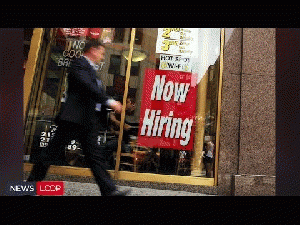Cross-posted from AlJazeera
While this is better news than we have seen for a while, the economy still has a long way to go before the labor market gets back to its pre-recession level. The economy needs to generate almost 7 million more jobs to make up for the jobs lost in the downturn and the growth in the labor market in the last six and a half years.
Simply to keep pace with population growth, the U.S. needs to create roughly 90,000 jobs a month. Even if the economy creates jobs at the 270,000 rate of the last three months, which no one expects, it would not get back to full employment until the middle of 2017. At a more realistic but still optimistic pace of 200,000 jobs a month, the U.S. wouldn't get back to full employment until late 2019.
The prospect of waiting another five years to reach full employment is not acceptable. It means that millions of people are being needlessly denied the opportunity to earn a living. Also, since most workers are not able to see wage gains in a weak labor market, continued high unemployment means that most of the gains from economic growth will go to those at the top. That the current jobs situation is better than during the worst of the downturn is hardly something to cheer about.
The absurdity is that economists know how to get back to full employment. The basic problem is that there is inadequate demand in the economy. The housing bubble that drove the economy before the recession led to huge amounts of construction and a consumption boom based on bubble-generated housing wealth. When the bubble burst, there was nothing to replace this lost demand.
There are three ways to deal with this shortfall in demand. The first is the simplest and most obvious: Get the government to spend more money. This solution doesn't fly well with those obsessed about balancing the budget. But those grounded in reality know that in a badly depressed economy, the government can boost output and employment by spending more money.
This was shown by President Franklin D. Roosevelt's New Deal programs, which had the economy growing at more than 10 percent annually. The massive spending associated with World War II made the case even more dramatically. Those looking for more recent examples might focus on Japan. It has a debt burden almost three times as large relative to its economy as ours. Yet it adopted an aggressive stimulus program that pushed its unemployment rate below 4.0 percent and created the equivalent of more than 4 million jobs in a bit more than a year.
But if the balanced budget obsessives won't let us increase demand through more government spending, we also have the route of trade. One of the main reasons the U.S. has inadequate demand in the economy is the trade deficit. We spend roughly $500 billion (3 percent of GDP) a year more on imports than foreigners spend on our goods and services. This trend is creating demand in other countries, not the United States. If we had balanced trade, we would get almost all the way back to full employment.
There is a simple way to reduce the trade deficit: Reduce the value of the dollar against foreign currencies. This step would make our exports cheaper compared with other countries' and make imports more expensive relative to domestically produced goods. The evidence on this point is rock solid. When the dollar rises in value, the trade deficit goes up; when the dollar falls, the trade deficit gets smaller.
We also know how to reduce the value of the dollar. There are many routes to a lower dollar, but the most obvious is to negotiate a reduction with our major trading partners. This was done successfully in the mid-1980s under President Ronald Reagan; it can be done again today. It's worth mentioning here that trade deals such as the Trans-Pacific Partnership have nothing to do with the trade deficit, which is our most important trade problem.
Finally, if we can't increase aggregate demand, we can reduce the supply of labor. The way to do this is by encouraging firms to reduce work hours as an alternative to laying people off. Germany has successfully pursued this work-sharing path to bring its unemployment rate down to 5.1 percent even though its growth has been no better than ours.
The great aspect of this policy is that it can be done at the state level. Most states now have short work programs as part of their unemployment insurance system. These should be promoted. The federal government even picks up the tab at least through the rest of this year.
Other policies that can be pushed at the state and local levels include mandated family leave, sick days and even vacation days. People in the United States work far more on average than workers in other wealthy countries. Bringing our work habits more in line with our peers' is both a way to create more jobs and create better lives for working people.
The disaster that hit our economy when the housing bubble collapsed in 2007 and 2008 was entirely predictable and preventable. Tens of millions of people have seen their lives uprooted by this preventable tragedy. There is no excuse not to do everything we can to bring this needless suffering to an end.






